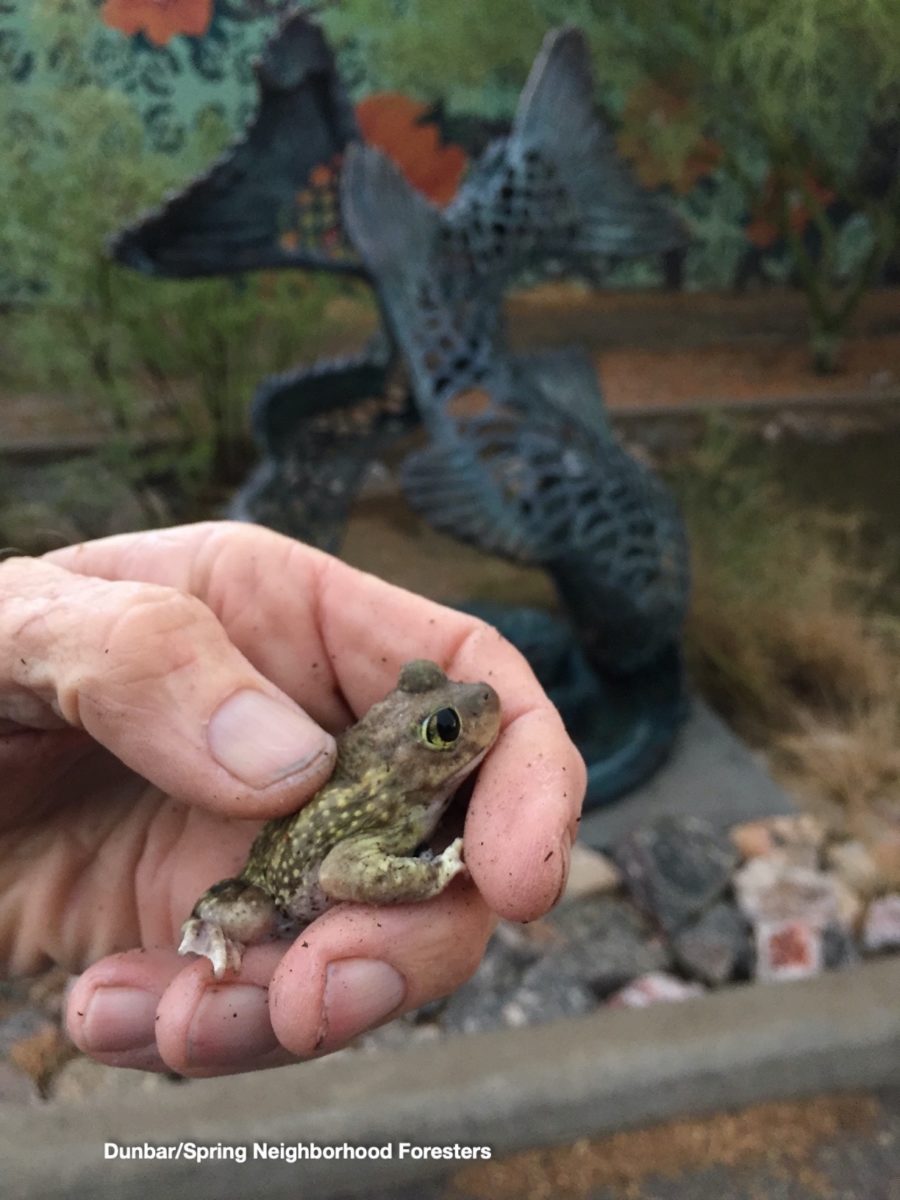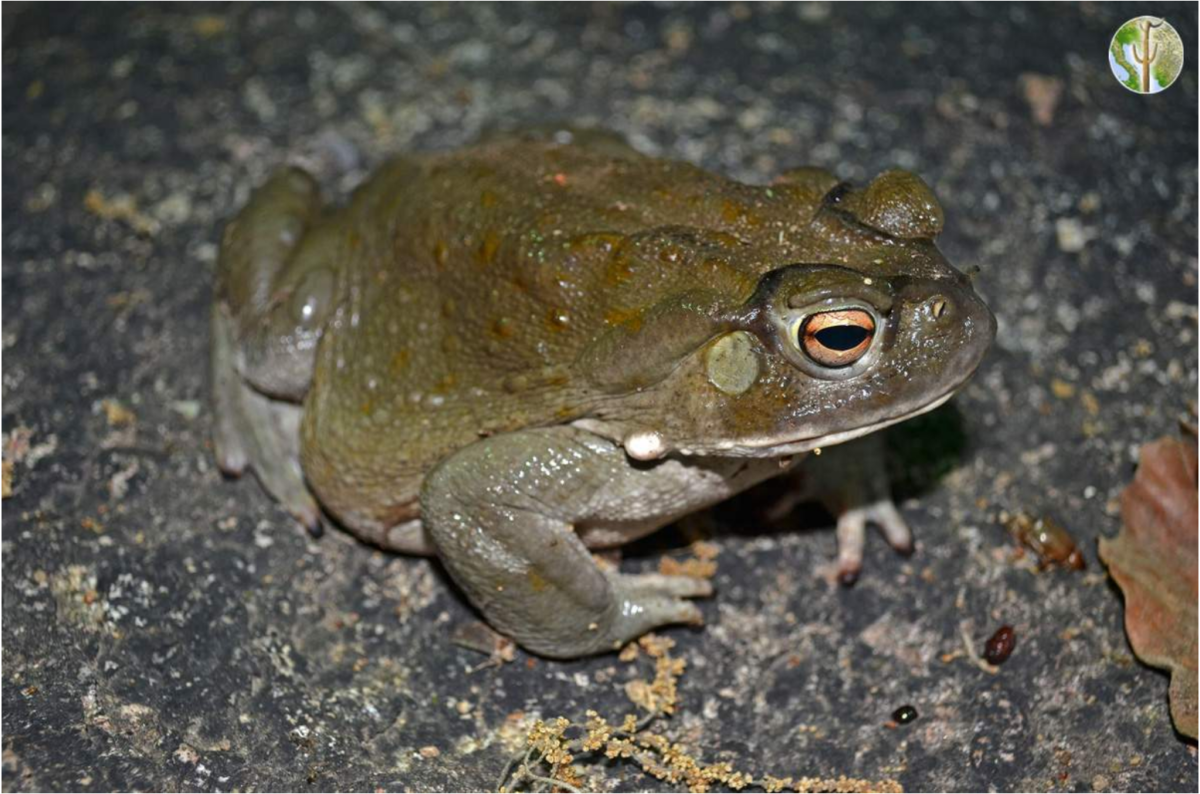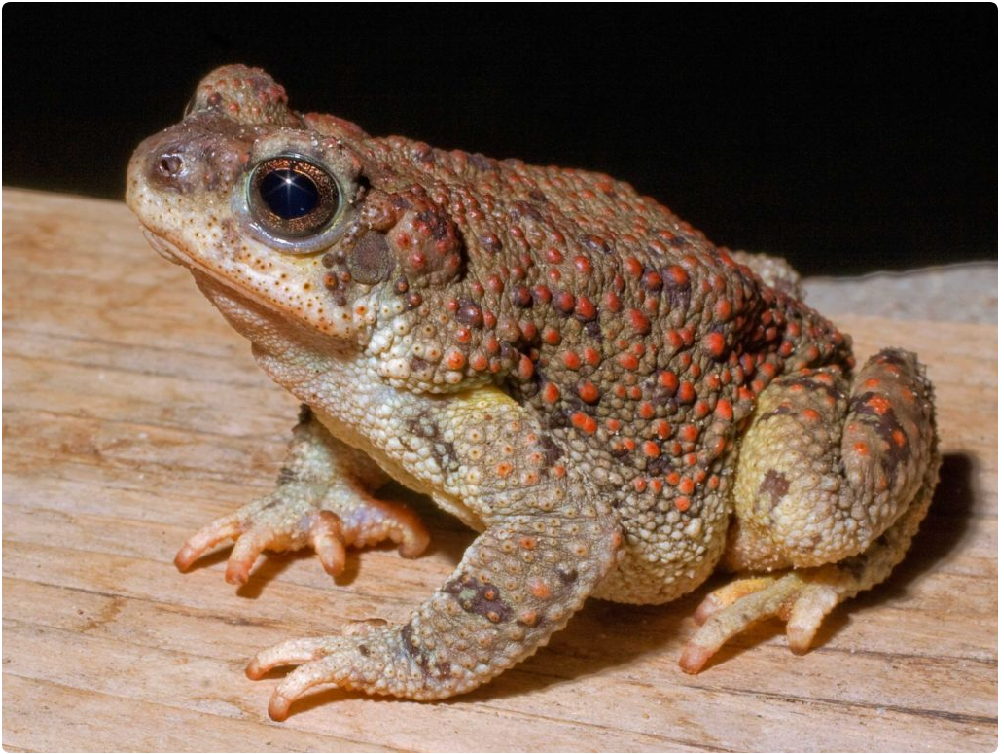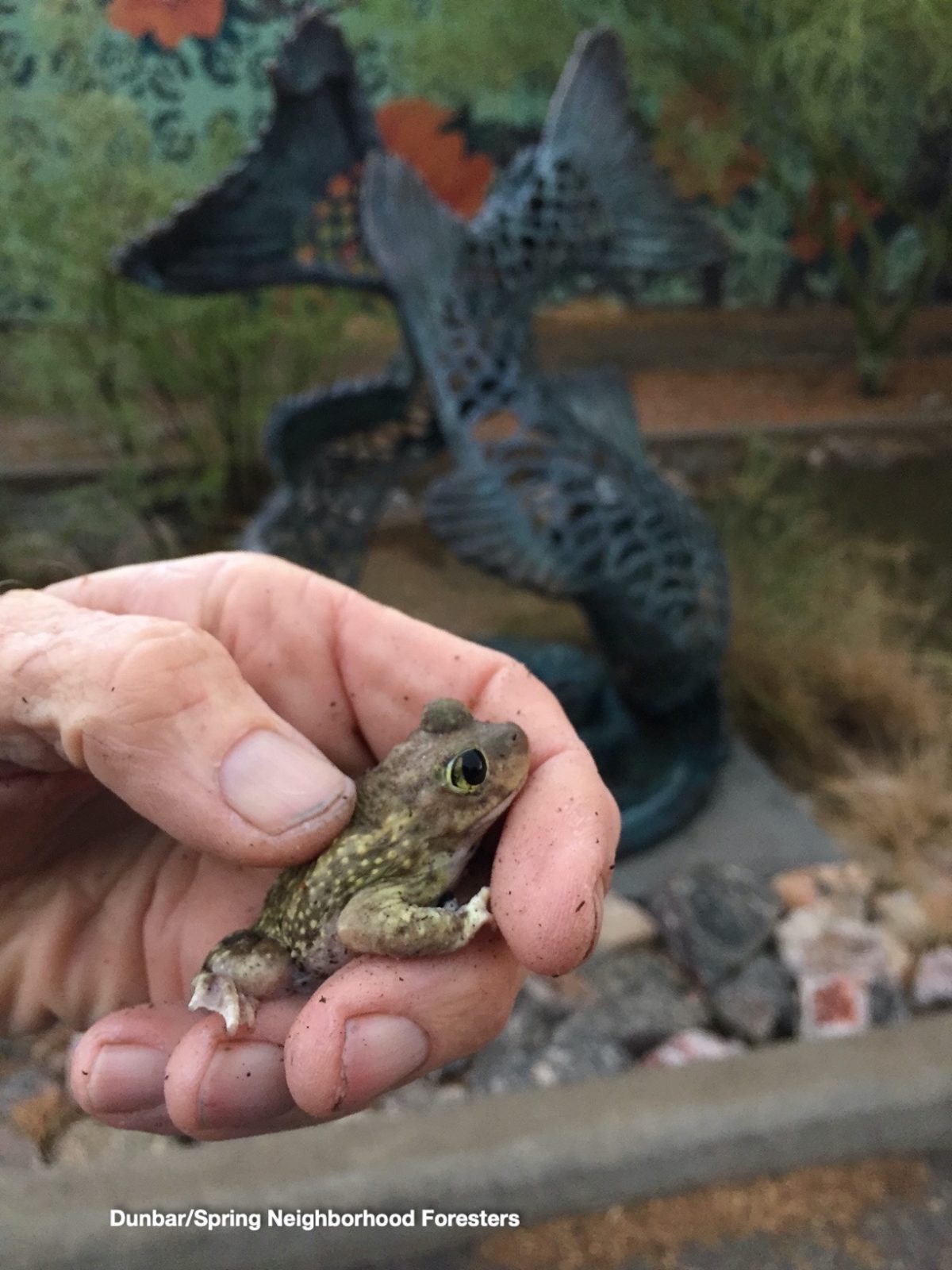By Robert Villa
Tucson Herpetological Society, TucsonHerpSociety.org
Our Devonian and Mesozoic Neighbors
We are fortunate to live in a vibrant and diverse barrio of people, art, food, community, and urban ecology. It’s not hard to miss and be a part of!
Even in our back yards, we host plants and animals native to our world-renowned Sonoran Desert: a desert of neo-tropical origin, only a baby at 5-8 million years old. If you’ve walked your dog, sat on your porch, watered your garden, ridden your bike, or simply looked out your window, you’ve very likely observed a lizard, a toad, or (if you’re lucky) a snake. I’d like to think we have one of the most herp-diverse barrios in Tucson.
A “herp” refers to an amphibian or reptile, and people who study them are herpetologists. While some people “bird” others “herp”. There’s not much difference between the two, and in fact they both use binoculars, except one group looks up or down more than the other.
Did that rock just jump? – The Amphibians
You might have been sitting on your porch after a monsoon gully-washer and fence-lifter and heard a…bleating sheep? No, it was a Spadefoot Toad, the most common amphibian in urban Tucson.
The only amphibians in our barrio are anurans (tail-less amphibians that includes frogs and toads). Needing water or moisture to keep from crisping, and to breed, amphibians in a desert is quite a feat! Where do they go when it’s not wet/moist? They bury themselves deep in the ground and retain layers of dead skin that keep moisture in their bodies until the next chubasco floods them from their winter/spring homes (aestivation). When they surface, mature adults dedicate themselves to gorging on insects (mostly beetles), and reproducing (amplexing)! Because water dries up so quickly in the desert, the tadpoles hatch from eggs laid in large rain puddles and transform into young adults in a record-breaking 8-9 days! Cannibalism is not unusual in shrinking waterholes, too!
Couch’s Spadefoot Toad – Scaphiopus couchi

The Couch’s Spadefoot Toad is like a mini Jabba The Hut, and is technically neither a true toad or a true frog, but a spadefoot: a sub family within the anurans. Its common name is endowed from the little black, horny protrusion at the bottom of the creature’s hind feet that it uses to bury itself into the ground. Females are speckled with light and dark colors while males are much lighter or plain. When picked up, it secretes a defensive substance through its skin that can cause sneezing (they smell curiously like roasted peanuts!) and the eyes to water if you don’t wash your hands after handling them.
Great Plains Toad – Bufo (Anaxyrus) cognatus
See here for Great Plains Toad photos
The Great Plains Toad is a tan-colored toad with large green splotches that is also spade-footed. A toad is distinguished from a frog by its warty skin and large gland behind the eye that secretes defensive toxins. These are only medically significant if ingested. People and small dogs should go to urgent care if poisoned. Large dogs may be treatable by liberally rinsing their mouth with water.
Sonoran Desert Toad – Bufo alvarius

The Sonoran Desert Toad is the third most common anuran in our barrio and the largest amphibian in our region. Adults are hard to miss at five inches or more. Adults are dark olive green while young animals are lighter with dark orange spots.
Red-spotted Toad – Bufo punctatus

The Red-Spotted Toad is a tan-colored toad with red spots that sounds like an extended cricket call when calling. Amphibians are some of the most endangered animals on earth for a variety of reasons, but mainly climate change, and pollution, causing a variety of diseases. I think our longtime residents can remember being deafened by the cacophonous choruses, and swarmed by thousands of pea-sized anurans decades ago.
For more info, including more local amphibians and reptiles
with photos and natural history see:
the Tucson Herpetological Society’s website
For more on how you can steward your landscape to support more wildlife:
• Participate in Tucson Audubon’s Habitat at Home program
• Sign up and participate in our Neighborhood Foresters program

